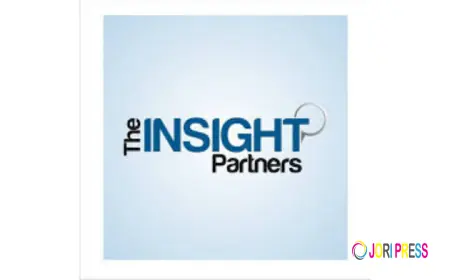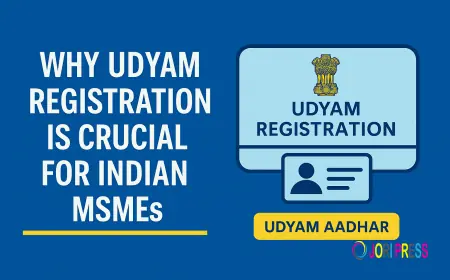How Cybersecurity Compliance Consultants Turn Regulation into Competitive Advantage
See how the right consultant transforms compliance from a burden into a business advantage.

Let’s cut the fluff. You’re here because "compliance" has become a word that lands on your desk with a thud. It sounds expensive. It sounds like a headache. And most of all, it sounds like an IT problem.
It’s not.
For a CXO, "compliance" is a business strategy. It's the armor that protects your revenue, your reputation, and your ability to operate. The average data breach just cost companies $4.45 million, according to IBM. Suddenly, this isn't an IT issue; it's a multi-million dollar line item on your risk register.
This guide isn't for techies. It’s for leaders. It’s the playbook for turning that complex liability into a competitive advantage. We’ll demystify cybersecurity compliance consulting and give you a clear framework to go from "at-risk" to "audit-ready."
What Is Cybersecurity Compliance Consulting (And Why Does It Matter at the Board Level?)
Defining the Terms
Let's make this simple.
Cybersecurity Compliance: This is the proof that you are following the data protection laws, rules, and standards that apply to your industry. It’s not just having a firewall; it's proving the firewall is configured correctly according to a specific standard (like PCI DSS).
Cybersecurity Compliance Consultant: This is your guide. Your translator. They are the strategic partner who maps your business operations against those legal standards, finds the gaps, and builds the plan to fix them. They speak both "C-Suite" (risk, ROI, reputation) and "Tech" (vulnerability, encryption, audit).
The Business Case for Compliance (The "Why" for CXOs)
Your IT team worries about security. You worry about the business. Good consulting connects the two. The "why" isn't about passing an audit; it's about what passing that audit unlocks.
-
Avoid Crippling Fines: This is the most obvious one. A single GDPR violation can cost you up to 4% of your company's global annual revenue. That’s a number any board understands.
-
Build Customer Trust: Want to beat your competitors? Prove you protect customer data better than they do. A SOC 2 report isn't just a compliance document; it's a sales tool. It tells your clients you are a safe bet.
-
Enable Business Operations: You can't win certain contracts without proving compliance. It’s that simple. If you want to handle DoD (Department of Defense) data, you must deal with CMMC. No certification, no contract.
-
Reduce Breach Impact: Compliant companies don't just get breached less; they recover faster and cheaper. Because they have a plan. They've done the fire drills.
Navigating the "Alphabet Soup": Key Frameworks That Apply to Your Business
The world of compliance is a jungle of acronyms. It's confusing by design.
Stop trying to learn all of them. You only need to know the ones that govern your industry and your data. A good consultant finds your specific obligations. Here are the most common frameworks, broken down by who they impact.
Healthcare & Life Sciences
-
HIPAA (Health Insurance Portability and Accountability Act): The big one. If you touch, store, or transmit Protected Health Information (PHI) in the United States, HIPAA rules your life. This isn't just for hospitals; it's for their billing partners, their software vendors, and anyone in that data chain.
Finance & E-commerce
-
PCI DSS (Payment Card Industry Data Security Standard): Do you accept credit cards? At all? Then you must follow PCI DSS. This standard is non-negotiable and is mandated by the card brands (Visa, Mastercard, etc.). It’s a technical framework focused on protecting cardholder data, and our PCI compliance services are built around this exact challenge.
-
GLBA (Gramm-Leach-Bliley Act): This forces financial institutions—from banks to investment advisors and even car dealerships—to explain how they share and protect customers' private financial information.
-
SOX (Sarbanes-Oxley Act): For public companies. SOX is about the integrity of financial reporting. A huge piece of that is IT security. How do you protect the financial data and systems from being tampered with?
Technology & SaaS (B2B)
-
SOC 2 (System and Organization Controls 2): This is the gold standard for B2B tech companies. A SOC 2 report is an auditor's opinion on how well you manage and protect your customers' data based on five "Trust Services Criteria": Security, Availability, Processing Integrity, Confidentiality, and Privacy.
-
ISO 27001: This is the international standard for an Information Security Management System (ISMS). It's a top-down, risk-based approach that is respected globally.
Government & Defense Contractors
-
CMMC (Cybersecurity Maturity Model Certification): If you are part of the Defense Industrial Base (DIB), CMMC is your new reality. It’s a tiered system (Levels 1-3) that mandates specific, verifiable cybersecurity practices. No CMMC, no DoD contracts.
-
NIST SP 800-171 / 800-53: These are the source code for federal security. NIST 800-171 is the set of 110 controls required for protecting Controlled Unclassified Information (CUI) and is the foundation for CMMC. We detail this in our NIST compliance services.
-
FISMA / FedRAMP: FISMA governs federal agencies themselves, while FedRAMP is the "pass-go" for any cloud provider that wants to sell to the federal government.
Global Operations
-
GDPR (General Data Protection Regulation): The 800-pound gorilla. Even if you're a US company, if you process the data of any EU citizen, GDPR applies to you. It redefined "consent" and "privacy" on a global scale.
The 5-Step Cybersecurity Compliance Consulting Roadmap
So, what do consultants actually do? They don't just hand you a 200-page report and walk away. (Well, the bad ones do).
A true cybersecurity compliance consulting engagement is a 5-step process. It’s a roadmap from chaos to control.
Step 1. Risk Assessment & Scope Definition
You cannot protect what you do not understand.
Before you can be "compliant," you have to know what you're protecting and what rules apply. This first step is all about discovery.
-
What it is: A consultant digs deep. They identify your "crown jewels"—the most sensitive data you hold. They map where this data lives, how it moves, and who can access it.
-
Deliverable: A Risk Register and Data Flow Diagrams. This is your treasure map. It shows exactly where the gold is buried and all the ways it could be stolen.
Step 2. Compliance Gap Analysis
Now that you know your obligations (e.g., "We must follow HIPAA") and you know your current state (from Step 1), you find the difference.
This is the chasm.
-
What it is: The consultant takes the specific framework—like a CMMC Level 1 compliance checklist and holds it up against your business. They go control by control, policy by policy.
-
Deliverable: A Gap Analysis Report. This is the punch list. It’s an itemized, no-fluff report detailing every single place your business fails to meet the standard. It will feel brutal. It’s supposed to.
Step 3. Strategic Remediation & Policy Development
A gap report without a plan is just bad news. This step is where the strategist earns their pay.
-
What it is: The consultant builds the blueprint to fix the gaps. They prioritize every finding from "critical" (fix this today) to "low" (fix this quarter). This includes writing the security policies you’re missing, like an Incident Response Plan or a Business Continuity Plan.
-
Deliverable: A Prioritized Remediation Plan and a full stack of Written Security Policies. This is your new rulebook.
Step 4. Implementation & Controls Integration
This is the heavy lifting.
This is where the plan becomes reality. The consultant moves from advisor to partner.
-
What it is: This is the "hands-on" work. It means deploying new security tools (like encryption or multi-factor authentication), training employees on the new policies, configuring systems to be more secure, and documenting every single change.
-
Deliverable: Implemented Controls and IT Audit Support. You don't just have a new firewall; it's installed, configured, and proven to work.
Step 5. Continuous Monitoring & Audit Readiness
Compliance is not a one-time project. It’s a culture.
The second you "pass" an audit, the clock starts ticking. New threats appear. Employees change. Your systems get updated. Compliance "drifts."
-
What it is: Your partner helps you set up a program to stay compliant. This involves ongoing vulnerability scanning, regular security awareness training, and managing the mountain of documentation needed for your next audit. This is the core of our cybersecurity compliance consulting.
-
Deliverable: A Managed Compliance Program and Audit-Ready Evidence. When the auditor shows up, you don't panic. You just hand them the binder.
How to Choose the Right Compliance Partner (Questions for a CXO to Ask)
The industry is full of "experts." Most are just technicians. You are hiring a strategic partner, and you need to interview them like one.
Toss their sales-slick and ask these questions directly.
-
"Do you speak 'business' or just 'tech'?" The right partner must be able to explain the ROI of a new control to your CFO and the technical details to your IT director. If they can't, they will fail.
-
"What is your experience in my specific industry?" This is critical. A HIPAA expert who knows hospitals is not the same as a CMMC expert who knows manufacturing. Ask for case studies. For example, do they have a clear CMMC compliance cost breakdown.
-
"What are your team's certifications?" Look for the heavy hitters: CISSP (Certified Information Systems Security Professional), CISA (Certified Information Systems Auditor), or framework-specific certs like QSA (Qualified Security Assessor for PCI).
-
"What is your process for a real-world breach?" This is the panic button. Do they have a clear Incident Response plan? How do they support you? If they stumble on this question, show them the door.
Cybersecurity Compliance FAQs
What are the core elements of a cybersecurity compliance strategy?
A strong strategy has five pillars:
-
Risk Assessment: Knowing what data you have and what rules apply.
-
Data Protection Policies: The written rules for how you handle that data.
-
Access Control: Ensuring only the right people can access data.
-
Continuous Monitoring: Actively hunting for threats and vulnerabilities.
-
Staff Training: Making sure your people are a defense, not a liability.
How do data security and compliance work together?
They are two sides of the same coin.
-
Security is the defense. It’s the firewall, the lock, the encryption. It's the technical "how”.
-
Compliance is the proof. It's the audit, the policy, the report that proves your security meets a specific, legally-required standard. You can't be compliant without security.
Final Words: Take Control of Your Compliance Posture
Cybersecurity compliance is no longer an optional cost center. It is a core part of your business strategy, as vital as finance, sales, or logistics.
Ignoring it is a gamble. Waiting for a breach or a failed audit is the most expensive way to learn.
The right cybersecurity compliance consulting partner moves you from a reactive, fearful posture to a proactive, confident one. They transform compliance from a bureaucratic burden into a badge of honor that wins you business and protects your brand.
At Defend My Business, we don't just run scans and hand you reports. We build resilience. We translate the "alphabet soup" into a clear, actionable business plan.
Stop navigating this minefield alone. Schedule a 30-minute consultation with our compliance architects to identify your specific risks and build your roadmap to resilience today.
What's Your Reaction?
 Like
0
Like
0
 Dislike
0
Dislike
0
 Love
0
Love
0
 Funny
0
Funny
0
 Angry
0
Angry
0
 Sad
0
Sad
0
 Wow
0
Wow
0

















































